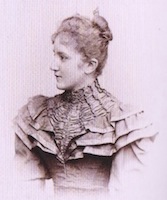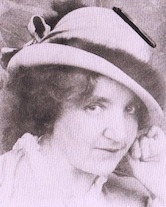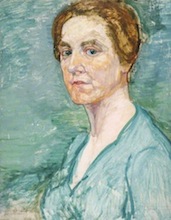Biography

Helene Funke was born on September 3, 1869 in Chemnitz, Saxony in Germany into an industrialist family. An only daughter with four brothers Funke grew up in a male-dominated world. Her decision to become a painter went against the family’s wishes. At twenty-nine she left her their home and went alone to Munich.
Women weren’t admitted to the Munuch Art Academy until 1920 so Funke attended the Ladies Academy of the Munich Artists' Association where she met Angelo Lank and Friedrich Fehr. Her earliest paintings show the influence of the French Impressionists. In 1904 her work was exhibited in Berlin and Chemnitz.

Helene Funke left Munich in 1906 and moved to Paris where she established close contacts with painters of the The Fauves (Wild Beasts) movement including Matisse, Derain, Marquet, Vlaminck, and Van Dongen. In Paris Funke found success at the Salon d'Automne. Her works were shown in the prominent artists’ association Salon des Independants. In this period Funke was known for her paintings of Parisian cityscapes and female nudes.
Funke traveled regularly including through the Mediterranean, the South of France, and in the Bretagne. She spent World War I in Vienna where she remained until her death. It was there she created her major works and received public recognition. The artist participated in exhibitions of the Vienna Secession, the Hagenbund, the Künstlerhaus, and at the Vienna Art Show. She was a member of the Association of Visual Artists Austria.

In 1918 she formed Movement, an artists’ association, with colleagues Alfred Kubin, Carry Hauser, and Georg Ehrlich among others. After 1919 the association was known as Free Movement.
In 1928 Helene Funke was the only woman artists among ten winners from fifty-three artists who competed for the Austrian State Prize. She won for her painting Tobias and the Angel. In 1929 the painting was acquired by the Kunstsammlungen Chemnitz.
Between 1934 and the end of World War II Helene Funke did not participate in exhibitions. In 1946 she obtained Austrian citizenship. Two years later the Galerie Welz presented her in a solo exhibit that included about fifty of her paintings. Following that her work was included in a collective exhibition at the Vienna Konzerthaus. Despite the fact that government owned works by the artist she struggled financially and found it necessary to accept commissions to paint portraits. Two years before her death Funke received an honorary title of professor.

Helene Funke died in Vienna on July 31, 1957 at the age of 88. She is buried at Vienna's Central Cemetery.
The self-imposed reclusiveness of Funke’s later years as well as her gender served to keep her reputation quiet and it is only now being rediscovered. A few of Funke's works are found in museums including the Belvedere, the Lentos, and the Museum of the City of Vienna. The majority of the paintings, drawings, and graphics are privately owned. Her impressionistic landscape paintings with their modern French influence are now positioning her as one of the most important painters of the early 20th century.
